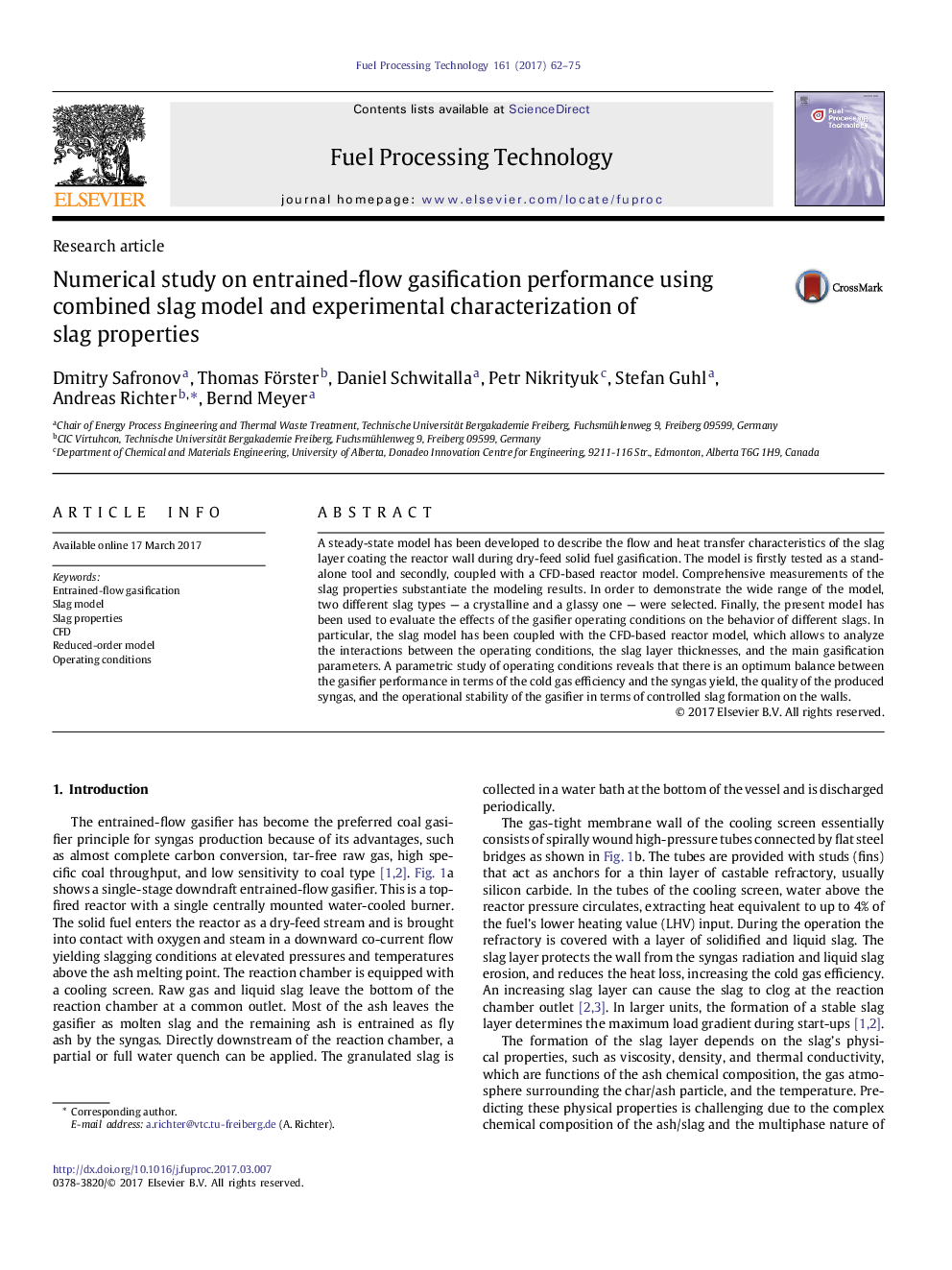| Article ID | Journal | Published Year | Pages | File Type |
|---|---|---|---|---|
| 6476472 | Fuel Processing Technology | 2017 | 14 Pages |
â¢A two-layer model has been developed to describe the flow and heat transfer characteristics of the slag layer.â¢The main transport properties of slags were experimentally investigated for different types of slag.â¢A standalone implementation of the slag model and an implementation in a CFD framework is described and discussed.â¢The effects of the operating conditions on the process performance and slag behavior have been evaluated.
A steady-state model has been developed to describe the flow and heat transfer characteristics of the slag layer coating the reactor wall during dry-feed solid fuel gasification. The model is firstly tested as a stand-alone tool and secondly, coupled with a CFD-based reactor model. Comprehensive measurements of the slag properties substantiate the modeling results. In order to demonstrate the wide range of the model, two different slag types - a crystalline and a glassy one - were selected. Finally, the present model has been used to evaluate the effects of the gasifier operating conditions on the behavior of different slags. In particular, the slag model has been coupled with the CFD-based reactor model, which allows to analyze the interactions between the operating conditions, the slag layer thicknesses, and the main gasification parameters. A parametric study of operating conditions reveals that there is an optimum balance between the gasifier performance in terms of the cold gas efficiency and the syngas yield, the quality of the produced syngas, and the operational stability of the gasifier in terms of controlled slag formation on the walls.
Graphical AbstractDownload high-res image (145KB)Download full-size image
